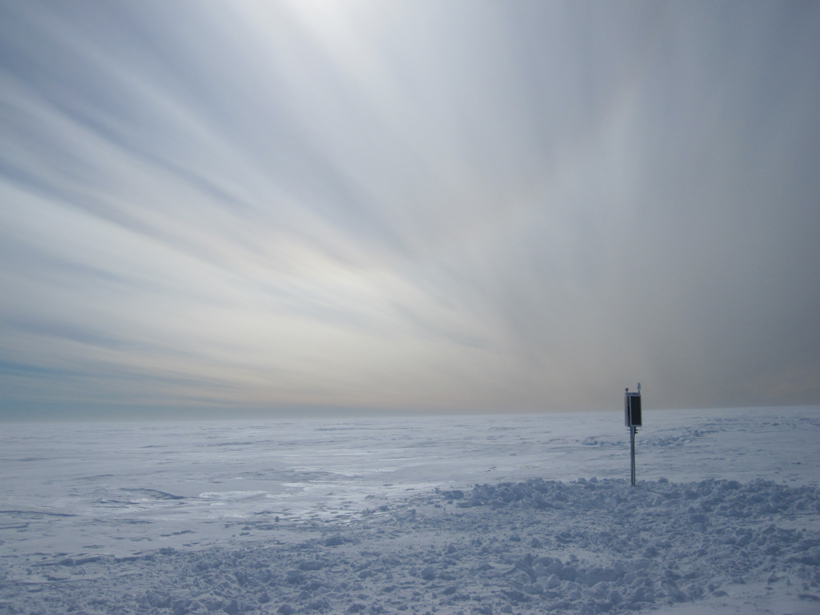Source: Geophysical Research Letters
Warming global temperatures have concerned scientists for several years now, but the local impacts of a changing climate are still being revealed. With their rapidly increasing melt rates, the Earth’s poles are a canary in the coal mine. Ice shelves, like Antarctica’s Ross Ice Shelf, act as icy buttresses that hold back glaciers draining toward the ocean from the interior of the continent; without these frosty restraints, glaciers flow directly into the ocean and speed sea level rise. Understanding how ice shelves respond to climate change and its effects on ocean–ice shelf interactions is critical for calculating potential changes in sea level that would impact economies and ecosystems around the world.
To assess the behavior of the Ross Ice Shelf, Bromirski et al. measured vibrations produced by two types of gravity waves—ocean swell generated by wind from storms at sea and infragravity waves generated when swell interacts with coastlines.
Broadband seismic stations on the Ross Ice Shelf captured signals produced when swell and infragravity waves from the North Pacific reached Antarctica, and the authors studied how the ice shelf responds to the wave impacts. Vibrations caused by impacts of waves from both the Southern Ocean and the North Pacific were detectable 100 kilometers from the shelf front. The measurements also revealed that shelf thickness, storm activity, and the extent of sea ice produced variations in amplitude, timing, and spatial distribution of the vibrations. The effect of these vibrations indicates that waves consistently cause the shelf to extend existing cracks and crevasses and drive iceberg calving.
The role of ocean waves in weakening the ice shelf is central to a better scientific understanding of the health of polar ice shelves. The study shows that the relationship between ocean gravity wave–induced vibrations and the structural integrity of ice shelves is a vital measure of how the poles will respond to future climate changes. Ultimately, the shifting dynamics of polar ice will have acute consequences for lives and livelihoods around the world. (Geophysical Research Letters, doi:10.1002/2015GL065284, 2015)
—Lily Strelich, Freelance Writer
Citation: Strelich, L. (2016), Ocean waves vibrating the Ross Ice Shelf, Eos, 97, doi:10.1029/2016EO046759. Published on 26 February 2016.
Text © 2016. The authors. CC BY-NC 3.0
Except where otherwise noted, images are subject to copyright. Any reuse without express permission from the copyright owner is prohibited.

